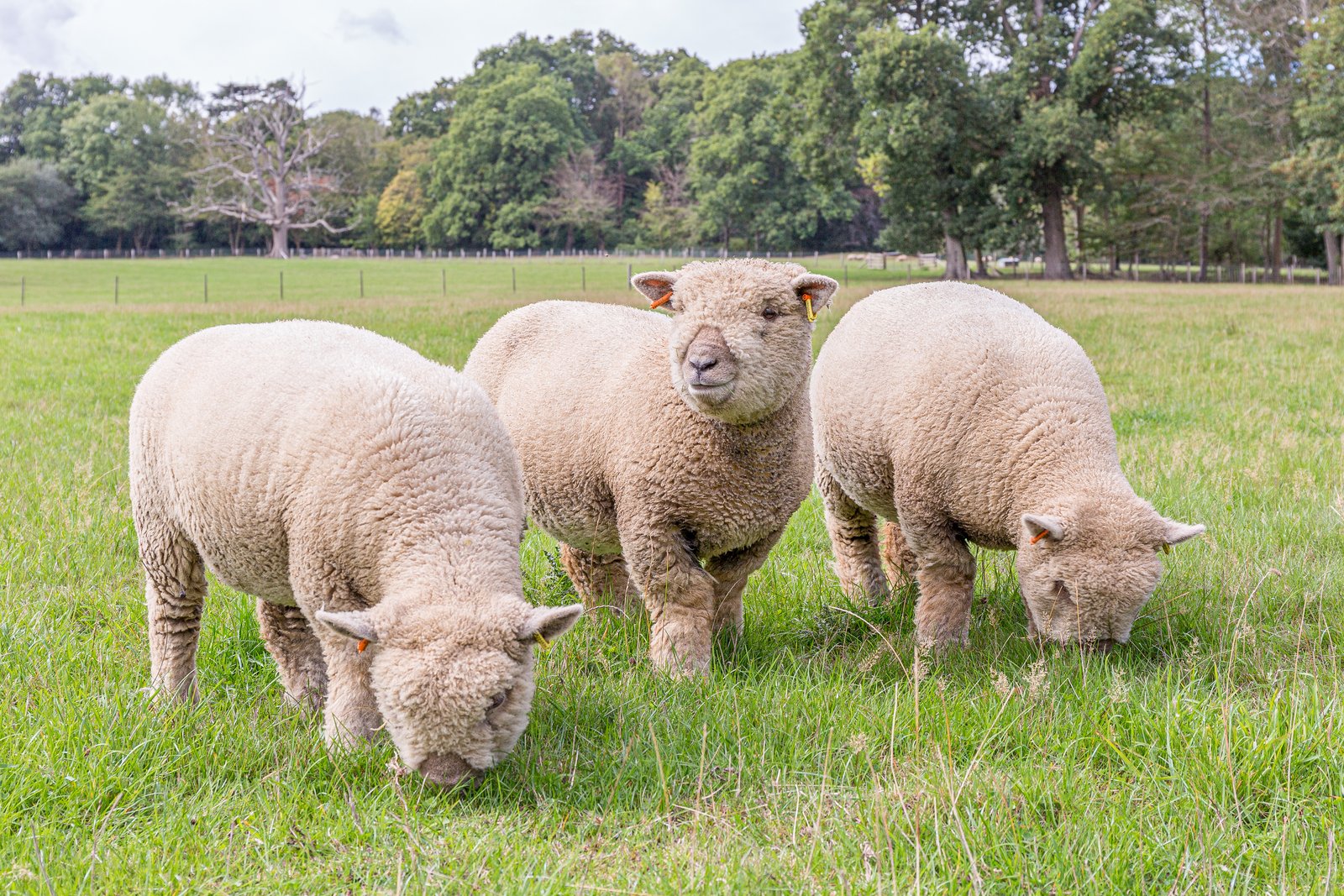Not to be confused with the Olde English ‘Babydoll’ Southdown sheep.
The Southdown is a small, dual-purpose English sheep, raised primarily for meat. The Southdown breed was originally bred by John Ellman of Glynde, near Lewes, East Sussex, about 200 years ago. His work was continued by Jonas Webb of Babraham in Cambridgeshire, who developed the larger animal of today. It was exported to New Zealand and was used in the breeding of the Canterbury lamb.
This sheep was involved with crossbreeding to develop other breeds:
- with the Wiltshire Horn and the Berkshire Nott, the Hampshire,
- via the Hampshire and the Cotswold sheep, the Oxford Down
- with the Norfolk Horn, the Suffolk.
The Southdown in Britain is recognised by the Rare Breeds Survival Trust as a native breed, although today it is popular amongst the smaller scale breeders of sheep.
Characteristics
It has been split into two sub-breeds. The Southdown raised by commercial growers today, is larger than the “traditional” Southdown of years past. North American Southdowns are also taller than their English counterparts. The original bloodline of the English Southdowns is the Olde English ‘Babydoll’ Southdown sheep in the US. They have been selected specifically for their smaller size of the original bloodlines and a focus on wool and hobby breeding rather than commercial meat production. In California and New Zealand, they are placed in vineyards to graze weeds because they are too short to reach the grapes on the vines. Baby Doll breeders claim that their sheep are closer to the original English Southdown than are the commercial Southdown sheep being grown today.
Mature weights for rams range from 190 to 230 lb (86-104 kg); ewes weigh from 130 to 180 lb (59-81 kg). From mature ewes, fleece weights are between 5.0 and 8.0 lb ((2.5 – 3.6 kg) with a yield of 40% to 55%. The fleeces are considered medium-wool type with a fibre diameter of 23.5 to 29.0 microns and a numerical count of 54 to 60. The staple length ranges from 1.5 to 2.5 inches (4-6 cm).
History
An estimated 110,000 sheep were in Sussex as early as 1341. At the time, their wool was second only to the Hereford sheep in fineness and quality.
In 1780, John Ellman realized the potential of these animals and set out to standardize the Southdown breed. In the 19th and first half of the 20th centuries, they were found in large numbers, especially in the South Downs near Lewes.
In 1813, Arthur Young estimated 200,000 ewes were kept on the eastern South Downs and commented, “the amazing number they keep is one of the most singular circumstances in the sheep husbandry of England”.
The principal reason for the large concentrations of Southdown sheep on downland farms over these centuries was their role in the maintenance of soil fertility. The large flocks grazed the open downs by day and at dusk, they came down to the lower arable land for folding. The downland soils are chalky and not naturally fertile, so the close-folding by the sheep on small areas manured and trod the soil. This meant wheat could be grown successfully the following year. With the gradual introduction of new crops such as field turnips, swedes, kohlrabi and other forage crops, the folding system took off, increasing in parallel with expanding human population. The system reached its zenith from about 1845 to 1880.
The 20th century brought the establishment of pedigree recording. By 1911, 359 registered Southdown flocks contained some 114,495 breeding ewes throughout Britain.
Much remained the same until the First World War, when the Southdown flocks declined with some rapidity, as shepherds and farm workers went off to war. By 1922, the 359 pedigree flocks had shrunk to 245. From then until 1939, the registered Southdown flocks numbered around 200. Folded flocks were no longer economical and smaller flocks averaged only 135 ewes apiece.
The use of artificial fertilizers had gained ground, and the combine-drill, which sowed grain seeds and fertilizer together, rendered close-folding by sheep unnecessary. Gradually surrendering to basic arable farming changes, the Southdown became largely a grassland breed. During the interwar years, the United Kingdom was known for farm animal breeding, and pedigreed Southdowns were still being exported to most parts of the world, especially New Zealand. In 1937, the number of exported Southdowns reached 459 head.
During the Great Depression, a severe and prolonged fall in the prices of wool and cereals due to rising volumes of imports from the British Empire was accompanied by the Wet Years – six years of cold, wet weather with little sun.
In the Second World War, the South Downs were commandeered for military training, only fringe farms being left to produce milk for the towns. Sheep farming declined further after the war, although it is now being encouraged again through the designation of the downland as an environmentally sensitive area, and the restoration of arable land to sheepwalk. The Southdown has been placed on a watch list by the Rare Breeds Survival Trust.
